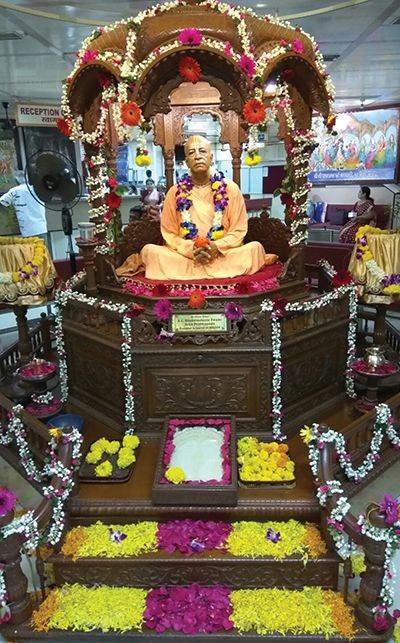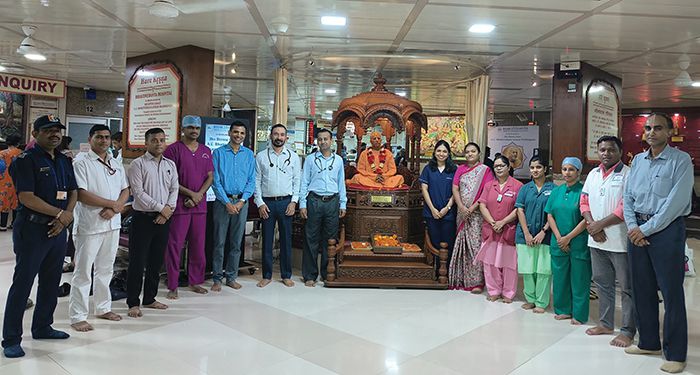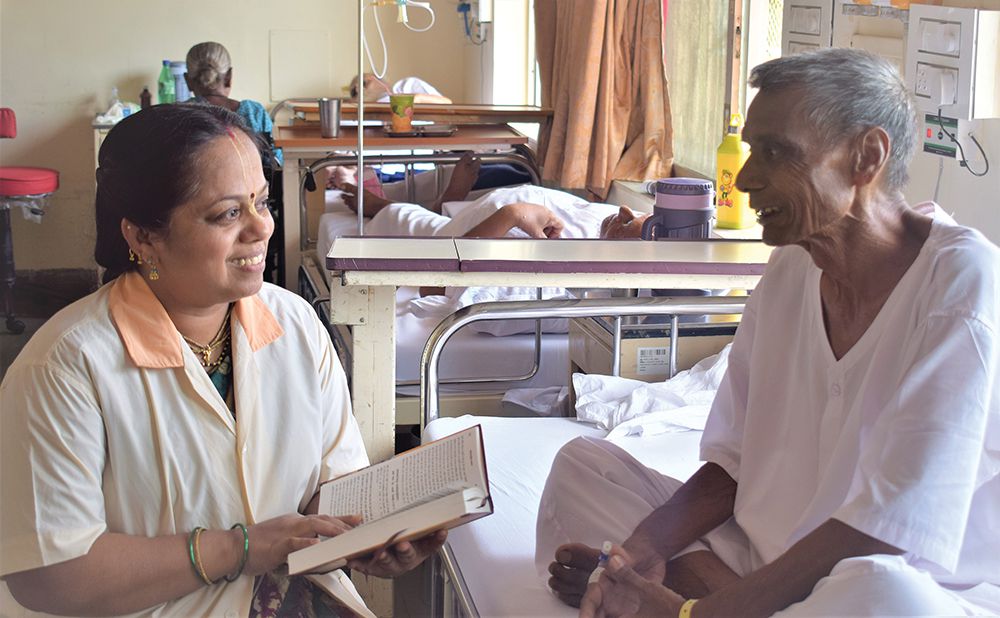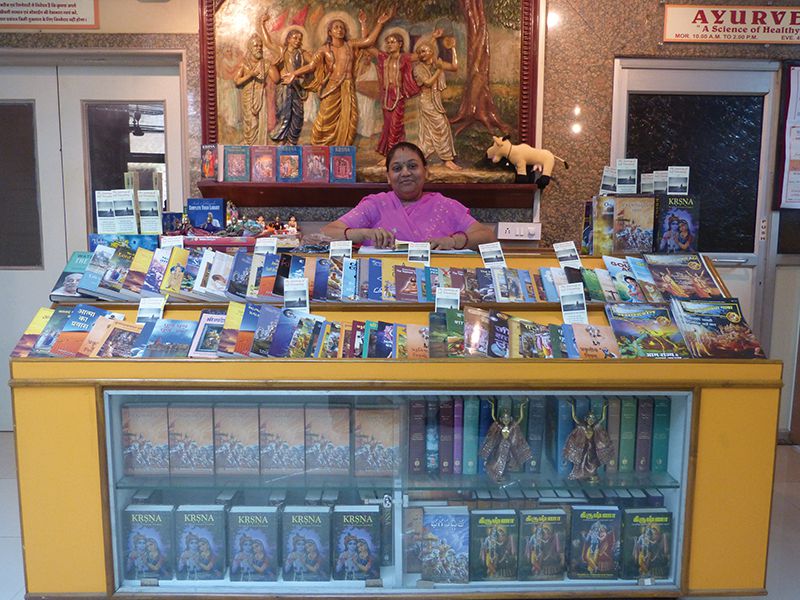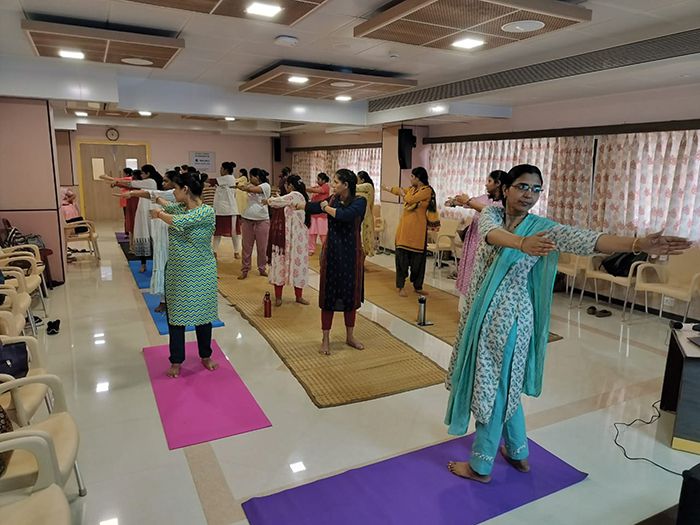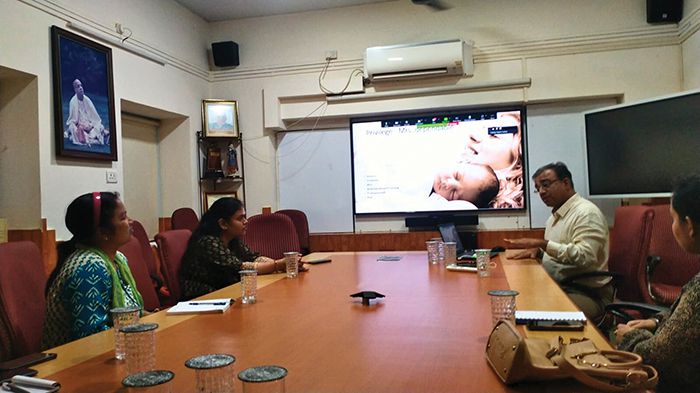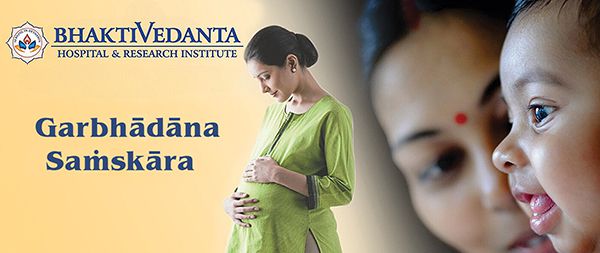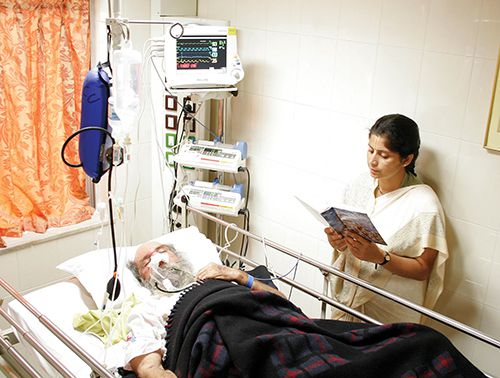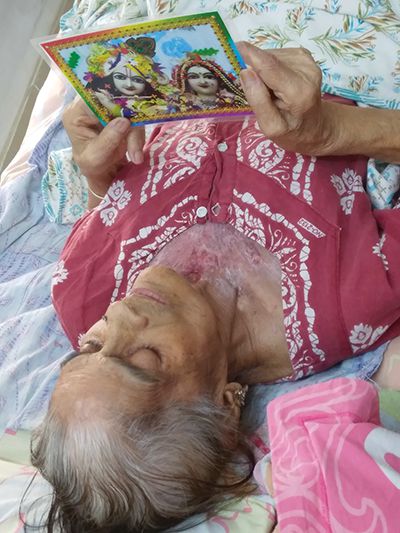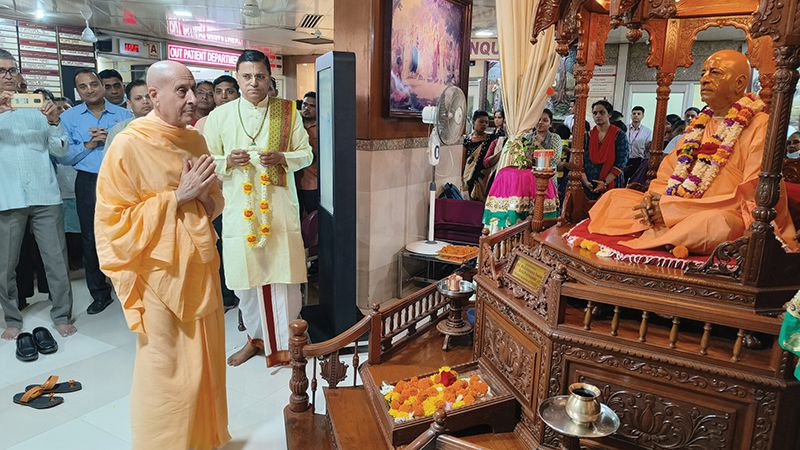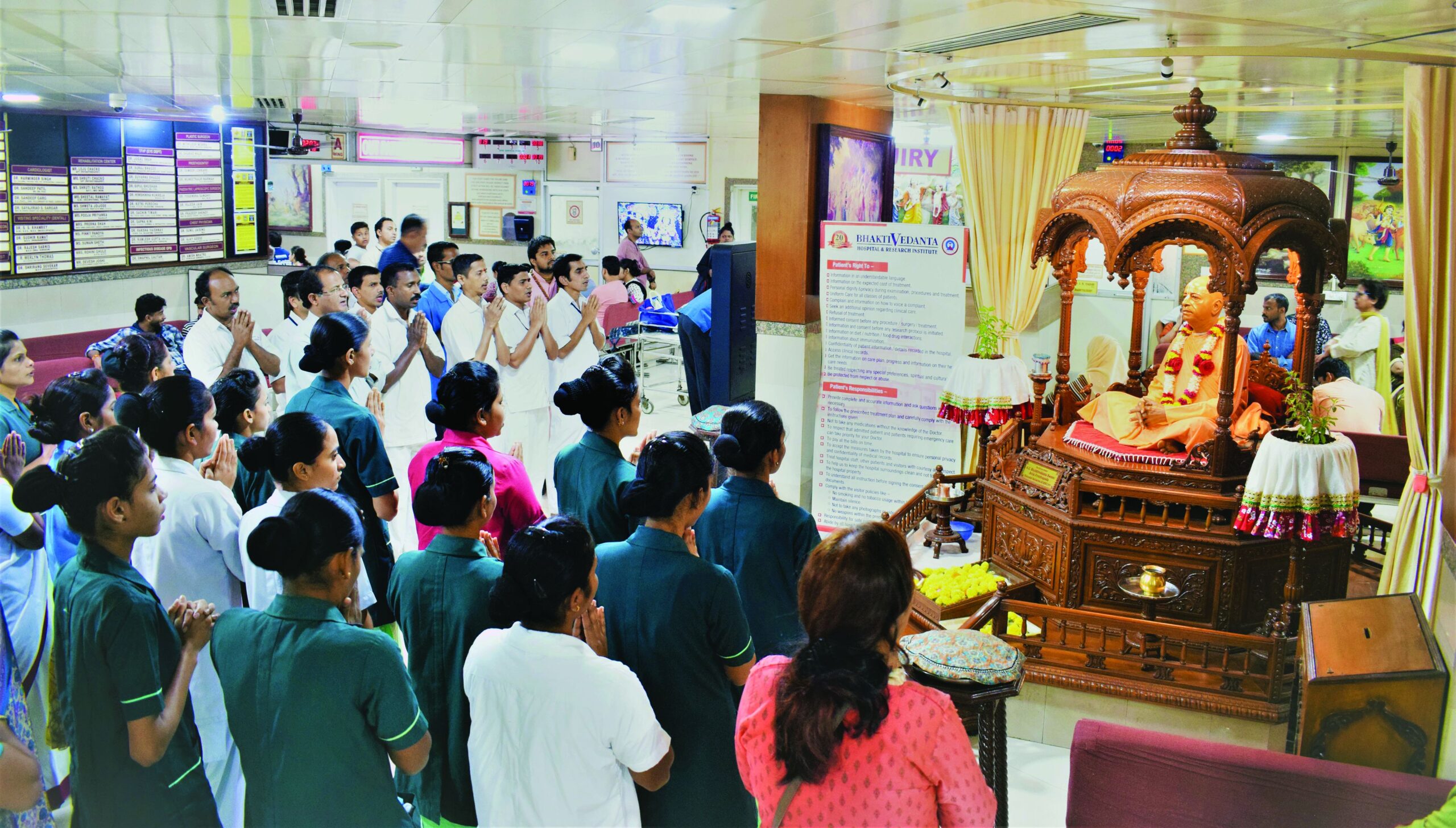
Where Healthcare Meets Divinity
A glimpse into the various social and spiritual outreach activities of Bhaktivedanta Hospital
By Mukundamala Dasa
Someday, I promise, to do something good for the people of India. Honestly, sir, I will help your people. Please give me a chance.” Those were the memorable words that His Holiness Radhanatha Swami Maharaja spoke to the kind-hearted old sikh officer who stamped his passport at the Hussianiwala border for his monumental entry into the holy land of India. And today, with thousands of disciples and innumerable projects, like Annamrita, Govardhan Eco Village, Gopal’s Garden to name a few, under his vision and guidance, Radhanatha Swami Maharaja has offered back much more to the people of India than what he had promised. Amongst these shining offerings, I was always attracted by one jewel of his, the Bhaktivedanta Hospital and Research Institute, which I always wanted to explore, and I finally got a chance to visit this unique institute a few weeks back.
Sitting outside the OPD rooms of the doctors, I, a curious spiritual seeker, now a practicing ISKCON devotee, had heard that this hospital has redefined healthcare by integrating spirituality into its core mission. I wondered if that was even possible! Well, I was here to find out!
I remembered Srila Prabhupada say in a lecture, “There are hundreds and thousands of hospitals, but where is the hospital for treating the spirit soul? This Krishna consciousness temple is the hospital for the diseased spirit soul.” (Town Hall Lecture, April 14, 1972, Auckland)
So, if temples can act like hospitals, can hospitals act like temples?
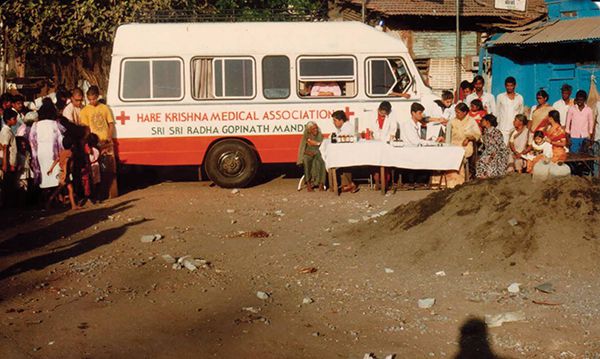
The Beginning
I met Ramasarana Prabhu (Mr. Rajesh Kadam) who was the Head of the Spiritual Care Department which took care of the spiritual wellbeing of its patients, irrespective of his or her religion. He promised to act as my guide for the day. As he was showing me around the hospital, I learnt about the birth of the hospital. In 1986, some of the ISKCON devotees who were fresh MBBS graduates — Dr. Ajay Sankhe (Madhavananda Dasa), Dr. Vivekanand Shanbhag (Visvarupa Dasa), Dr. Girish Rathod (Giriraja Dasa) and Dr. Dhaval Dalal (Dvarakadhisa Dasa). Their vision was further boosted later with the addition of Dr. Bimal Shah (Vaishnav Seva Das). They met at the ISKCON temple in Juhu with plans to serve Adivasi communities. Together they initiated their journey in Dukhtan Village, in Palghar district, conducting spiritually infused medical camps with kirtans, pravachan, and full prasada for all. Mr. Hrishikesh Mafatlal (Krishna Candra Dasa), Chairman of the Mafatlal group of companies, in his reminiscence of the young doctors said, “What touched me the most was the gentleness and warmth they displayed to the poverty-stricken villagers who became their patients. Here were extremely intelligent, talented youth in their prime, not only tending to the patients medically but also cooking for them, serving them, and nursing them.” Their unwavering dedication led them to Mira Road, a northern suburb of Mumbai, acquiring facilities from a one-bedroom flat to a full-fledged polyclinic and nursing home (in 1993) with an operating room.
Having observed the dedication and commitment of the devotees, Mr. Niranjanlal Dalmia, a generous landowner, donated 1.75 acres of land in Mira Road, igniting the ambitious journey to construct their own hospital. The dedicated efforts of the doctors and founders provided the wind beneath their wings, and on January 11, 1998, a 100-bedded hospital was officially inaugurated as an offering to Srila Prabhupada. With state-of-the-art facility, affordability and with a mission to serve, in the next 25 years, Bhaktivedanta Hospital grew into a 200+ bedded super-specialty tertiary care hospital, having various associate centres in Maharashtra and Uttar Pradesh. Even Dr. APJ Abdul Kalam, the former President of India, visited the hospital for inaugurating its heart centre and appreciated the quality of service given by the hospital to the vast set of population.
This remarkable revelation came as a surprise for me, and I was eagerly looking forward to the next chapter.
Hospital with a difference — The 3 V’s Principle
I suddenly noticed a doctor enter the hospital. Amidst his fast pace, he still paused to remove his shoes, offer quick yet mindful obeisances to Srila Prabhupada’s deity at the reception area, offer some water to the tulsi plant, offer a flower gracefully and then as quickly as he had removed his shoes, he wore them again and walked with long paces towards the stairs, rushing towards the ward. It was a busy day for him, but somehow his calm and composed demeanour attracted my heart. I noticed that the other patients around me were impressed too. At this point Ramasarana Prabhu explained the three important purposes (or 3 V’s) of Bhaktivedanta Hospital:
® Varnasrama
® Vaishnava Dharma Pracara
® Vaishnava-seva
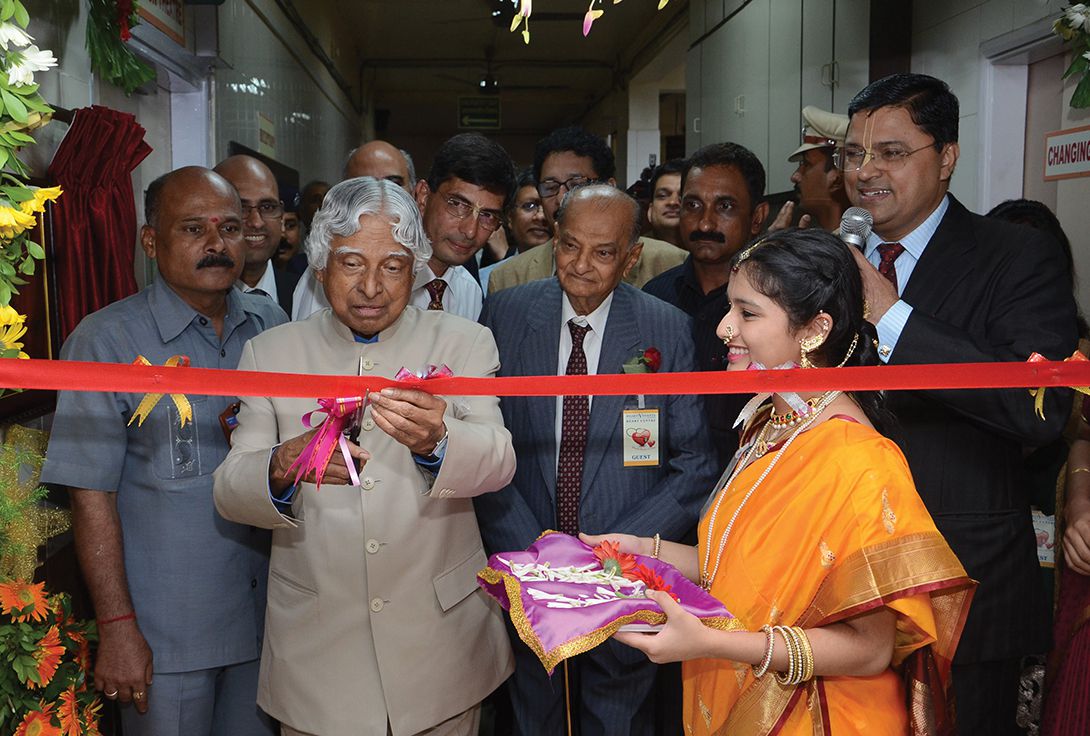
- Varnasrama
I had just got a glimpse of the varnasrama principle of the hospital. I came to know of other interesting aspects of the hospital such as them having prayers, daily, four times a day, at the beginning of each shift. Also, they had only sanctified lacto-vegetarian food (prasadam) served to the patients and staff and had Srila Prabhupada’s kirtan playing across the hospital twenty-four hours a day, etc. All this made the hospital look different from others.
Lord Krishna mentions in Bhagavad Gita that how He divided the society into four classes. In the modern age, the original varnasrama may not practically exist. But in principle, varnasrama today is where professionals of an occupation come together to serve and please Krishna. And with my own observation and interactions with the working team I could find out that Bhaktivedanta Hospital is a happy space for over a thousand of its staff who dedicatedly work for the mission and treat patients with genuine concern along with a sense of urgency.
Mr. Hrishikesh Mafatlal observed, “In the 25-years’ journey of an institution, there are bound to be moments of friction, differences of opinions, irrational behaviour, etc. That is normal with such a huge workforce. But what is unique is the spiritual wisdom and maturity through which problems are solved. The senior leadership of the Hospital comprises of spiritually accomplished devotees, but they also have the humility to frequently turn to the senior brahmacaris for advice. It is this combination of grihasthas (doctors and professionals) and brahmacaris (the renounced monks staying in the temple) that makes this hospital special.”
And as I further moved on, I touched upon various departments, where I was attracted by the hospital’s vibrant spiritual ambience and inspiring leadership, which makes the employees work more progressively like a family, but still retaining the submissive mood.
- Vaishnav Dharma Pracara — Spiritual Care Perspective
Ramasarana Prabhu explained to me that the most important aspect of Bhaktivedanta Hospital’s existence is its Spiritual Care Department, which has demonstrated transformative power and was a contributor to the another ‘V’ — Vaishnava Dharma Pracara. Patients, staff, and even doctors have undergone profound changes, embraced spiritual practices, and trying to lead lives free of vices. Over 25 years, 1286 individuals have embraced active spiritual lives, deeply connecting with their inner selves and with the spiritual teachings of the Srila Prabhupada.
“1286??” I exclaimed in surprise with a curiosity to know more.
Patients, whether they believe in God or not, are offered spiritual care tailored to their individual needs and desires in this hospital. Moreover, this care was voluntary and never imposed on patients. In fact, all spiritual care services are provided free of charge, reflecting the hospital’s commitment to the well-being of all who seek its care.
At the heart of Bhaktivedanta Hospital’s spiritual approach lies the MATCH guidelines — an acronym representing four pillars of Dharma (Mercy, Austerity, Truthfulness, Cleanliness) and the Holy Name. This spiritual compass was graciously provided by His Holiness Radhanatha Swami Maharaja and serves as the guiding light for the hospital’s unique way of providing spiritual care.
During the discussion I came across various interesting cases of spiritual healing, and one of them happened in the initial year of 1998 itself.
A patient named Williams was admitted in ICU in a comatose stage. The family started losing all hope. Damodara Pandit Das, a senior counsellor of spiritual care dept, counselled the family regularly and provided spiritual care to Williams by way of constantly chanting the holy name, reading scriptures, and engaging in direct discussion with the patient. This happened for many days and, dramatically on the night of fourteenth day of his admission, Williams, in whom no movements were observed until then, opened his eyes! In a feeble voice, he said, “I was listening to whatever you were reading and chanting. I have been getting energy from the Lord after listening to the holy chants.” A week later Williams was seen walking back home! This was one of the historic episodes of how the integration of spiritual care with medicines has helped many patients in their overall wellbeing. Indeed, a magical moment!
Nurturing Souls with Love and Compassion
Visiting the hospital was a purifying experience for me. I wondered what impact this hospital has had on the community. As we reached the eighth floor of the hospital, I noticed a poster on the auditorium that mentioned a one-day seminar on two different topics: Garbhadana-samskara & End of Life Care. I was curious. I decided to peek into the seminar.
“Hmm…” I thought to myself, “What they offered was a journey of spiritual care integrated with ayurveda, touching every phase of life of the patients, right from pre-conceiving, next to the womb and till the tomb.”
Garbhadana-samskara
They presented the story of a couple, one of the many couples, who even after several years of marriage, could not conceive a child. The patient embarked on an Ayurvedic examination at the hospital. Then they enrolled for garbhadana-samskara (a sacred process infused with spiritual grace), which is more than a treatment that commences three months before conception. Within just four months, with the help of spirituality interwoven with Ayurveda’s medical wisdom, brought forth the unimaginable — the couple conceived! This was no ordinary feat.
Through the spiritual care aspect of the program, they were offered advice on what to chant, what sounds to embrace, and how to protect the growing soul. Finally, the world welcomed a healthy, spiritually inclined, mentally stable, and energetically vibrant child. This journey continued through “Balasangopan — Child Care” until the age of five, revealing remarkable enhancements in immunity, constructive intelligence, grasping power, behavioural goodness, and healthy sleep patterns. What a sacred practice for parents expecting a child where they are guided to get detoxed, strengthen their physical, mental and spiritual level.
As expected, the room broke out into a loud applause upon hearing the story.
Embracing the Final Journey with Grace
As we moved on, I requested Ramasarana Prabhu himself to tell me more on palliative care (or end-of-life care). I knew that this program offers compassionate support to patients to alleviate their fear of death and guide them and their families to face this transition by acknowledging the emotional challenges they face.
I was surprised to hear the story of Nazma Sheikh, a divorcee who had no children and no job, who was dependent upon her brother and was suffering from last stage of colon cancer. I observed that the diverse religious beliefs of the patients were honoured here, providing tailored spiritual counsel and rituals. It was a generic, soul-centered approach that transcended religious boundaries.
Nazma had no hope of any kind of happiness in her life while the clock on the wall seemed like a time bomb. The doctors had given up, but Nazma chose to face her destiny with a thankful heart towards the Supreme Almighty. Living with her brother, she decided to take help of the recently established Department of Palliative Care and Hospice at the Bhaktivedanta Hospital. Nazma had a deep faith in God and was broad-minded in considering Bhagavan and Allah to be the same person. She appreciated the pastimes narrated to her about God and his devotees and devotional service.
We were amazed at her realizations about the Quran. Ramasarana Prabhu was excited to narrate Nazma’s story. “As a new Spiritual Counsellor in the Palliative Care Department, I got the opportunity to visit Nazma at her brother’s residence. Nazma would wait for the devotees to come and give her association. But her brother and her sister were sceptic about devotees. We expressed a lot of gratitude, and with the help of our clarifications, we convinced her that our purpose of coming to meet Nazma was to see her as a Hospice patient, as a daughter of Allah, as our God-sister. The other family members were convinced and the tension which had built up got diffused. I could see, though, that Nazma was appreciative and grateful.
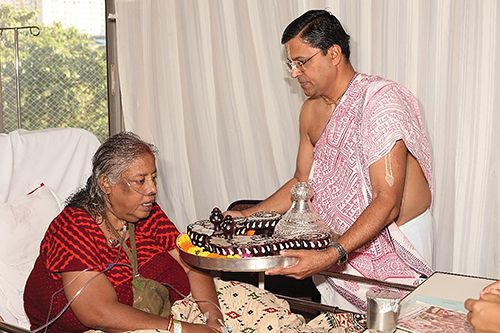
It was our desire that before her passing away, we could offer her Ganga Jal, Tulasi leaf and chant the Hare Krishna maha-mantra, but we did not want to do anything without the permission of the relatives.
“When Lord Jagannatha’s ratha was brought in front of her stretcher, for some time Nazma kept gazing at the lord. One staff gave her a flower of Jagannathaji. She smelled it in gratitude. Only a few hours were left in her life. She kept holding on to the flower and smelling it even after going home.
“I had developed a good rapport with her brother and sister, so taking advantage of that I chanted five rounds of Hare Krishna maha-mantra loudly to her. After the fifth round as I got up to take leave, she held my hand and said “You are my real brother. Thank you very much.” I said, “If you call me brother, you don’t need to say, ‘thank you’”. The next morning, I received the news that she had passed away.
“In every life phase and every vulnerable moment, our spiritual care is a beacon of love, compassion, and unwavering devotion to all kinds of people who take shelter of Srila Prabhupada in this hospital.” Ramasarana Prabhu smiled proudly as he ended his narration.
“How true!” I told myself, “And so, this is how spiritual care works.” This was real preaching, Vaishnava Dharma Pracara.
- Vaishnava Seva
“Do you know who H.H. Mahavishnu Goswami Maharaja was?” Ramasarana prabhu then asked me, as we moved on.
“Wasn’t he an initiating guru in ISKCON?” I replied.
“Yes, when he came here at the age of 94, he was at the last stage of his life. In all those 94 years, he had never ever gone to a hospital or had allopathic medicines, because he never believed in them. His disciples suggested that they take him to Nasik to leave his body, as Nasik was where he had preached the most. But Maharaja refused. He said he wanted to leave his body at Bhaktivedanta Hospital, because ‘this place was non-different from Vrindavan.’”
I immediately knew this was another purpose of the hospital —Vaishnava Seva, serving devotees who were dedicating their lives to serve the mission of Srila Prabhupada. The Hospital runs a special program titled ISKCON Devotee Healthcare Services to prioritize and offer special care to all the devotees and to take care of their health.
Ramasarana Prabhu explained further what Madhavananda Prabhu, the hospital’s director and one of the founding members, had taught him regarding the extended aspect of Vaishnava Seva, which jiva-daya, compassion towards all living entities. The idea is that everyone is a guest of Srila Prabhupada and needs to be treated with utmost care and compassion and one had to give them the feeling that this is their “home away from home.” I was really moved to hear about this. The testimony to this service attitude is the fact that today Bhaktivedanta Hospital has served millions of patients and is still counting.
Beyond Health Care – Touching lives
In Bhaktivedanta Hospital, life has no price tag! Many patients who are underprivileged are given free or concessional treatment under the unique concept of NOGA (No One Goes Away). There have been numerous times when Bhaktivedanta Hospital was indeed a helping hand for many patients — be it the case of Raju Shetty, 45, a colon cancer patient, who regained his natural attraction for the Lord with support from hospital; or the case of Rachna Ghag whose children Shaili and Gaurav were taken under the care of the hospital after they had lost both parents. The hospital team has even helped patients resolve family disharmony or distances in relationships before they passed away.
Isn’t this what is called going beyond healthcare? I could see that the hospital ran mostly with the purpose of the 3 V’s in its vision given by Radhanatha Swami Maharaja.
As I was winding up my day, I remembered that a senior ISKCON devotee would often ask, “Prabhupada wanted temples, not hospital. So why do we have this hospital as a part of ISKCON?” But when he was attacked by a life-threatening illness and he received treatment here, he said, “One of the greatest mistakes I made was when I said hospitals are not needed in ISKCON. The holistic and integrated approach where there was a merging of allopathy, Ayurveda, naturopathy and pranic healing was available only here in a spiritually vibrant atmosphere.”
He concluded, “ISKCON needs many Bhaktivedanta Hospitals.” And I could not agree less.
Mukundamala Dasa, a disciple of His Holiness Radhanatha Swami, serves as a resident monk at ISKCON Chowpatty in Mumbai. He is a member of the BTG India editorial team.
